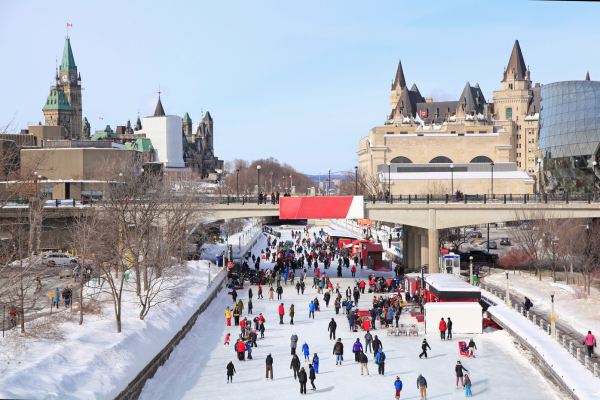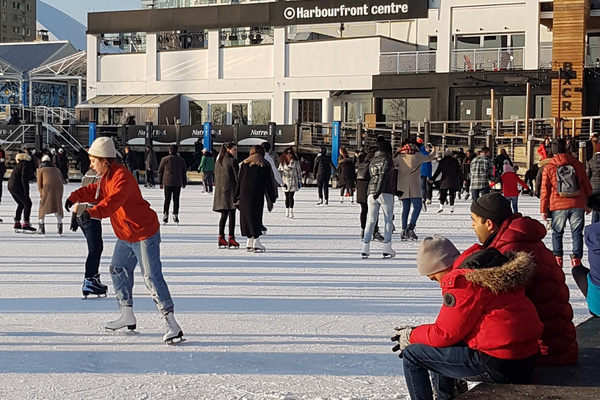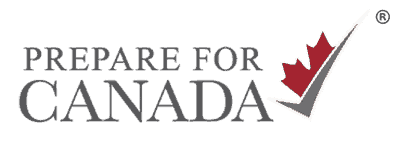
The winter season in Canada can be cold and long, however, with the right winter clothing, you’ll be quite comfortable. And, with central heating in homes, it is warm and cozy throughout the winter. The same is true of nearly every indoor space, so you will not have to spend too long in the cold if you don’t want to. For newcomers, it’s important to get winter-ready by investing in good winter clothing. The most important and basic winter clothing you need is a reliable water-resistant coat to withstand sub-zero temperatures. With a warm and quality winter coat and other winter essentials, you’ll be warm and cozy.
Canadian Weather Conditions
Canada goes through a cycle of extreme weather conditions. On the one hand, there is a harsh cold winter season, and on the other, it has the most beautiful spring and summer seasons ever. The average temperatures in the winter can vary across Canada depending on the location, creating different weather conditions. For example, in provinces such as Alberta, Saskatchewan, and Manitoba the average daily temperature can be anywhere between -15 degrees C and as low as -40 degrees C. Whereas British Columbia enjoys a relatively mild and rainy winter where the temperature rarely drops below the freezing point. Even though the winter season comprises December, January, and February, sometimes it can stretch until March depending on the severity of the temperatures.
Advertisement:
Enjoying Activities in the Winter Season in Canada
Winter is a huge part of Canadian culture which is reflected in Canadian art, music, literature, lifestyle, and sports. As a way to cope and enjoy the cold weather, there are many activities you can do. Get to know Canada’s seasonal celebrations by taking part in winter events like the light festivals such as ‘Toronto’s Cavalcade of Lights’ or the ‘Winter Festival of Lights celebrations in Vancouver.’
Advertisement:
Winterlude in Ottawa features the world’s longest rink, ice sculptures, and lots of food and hot drinks, and it is also a great attraction. Take a fun trip with your kids to see the Québec Winter Carnival in Québec City. If you like adventure, try to learn skiing or ice skating or go ice fishing, etc. If you don’t have the funds or access to the above options, you can try other ways to stay busy by keeping physically active through exercise. Even a ten-minute walk in the sunlight can release and combat the winter stress and help your mental and physical well-being.
So the big question is how to make it through the winter season in Canada
The fact is, people don’t hibernate during the winter season in Canada. They get outdoors to experience life and embrace winter sports like hockey, ice skating, curling, skiing, and snowboarding. The real spirit of merging with Canadians comes from being open-minded and experiencing the country’s culture.
As a newcomer, you may not have a car in the first little while after you arrive. If you plan on taking public transport in Canada during the winter, you may have to wait at the bus stop in very cold weather. This is when you will need some essential winter clothing items to help you stay warm.
Winter Clothing to Help You Stay Warm in Canada!
1. A Good Winter Jacket
It’s best to wait until you arrive in Canada before you buy your winter jacket. It might be more expensive than the one you can buy in your home country, but it will be better suited to the winter season in Canada. When looking at winter jackets, ensure that they are well padded, cover your neck, and have a hood.
Types of Winter Jackets
You can select from down jackets, synthetic jackets, and activewear jackets Each type of jacket offers different levels of protection for the winter season in Canada and the type of activity you plan to wear it for.
Advertisement:
Down jackets are great insulators, are lightweight, and trap and hold heat. The more down, the higher the cost of the coat. Typically, a 500 to 800-fill power is suitably warm and affordable. Synthetic insulation is heavier than down, but it is still warm, even when it is wet. It’s also a more affordable winter jacket option.
Winter jackets in Canada are specifically designed for temperatures below 0 degrees. When selecting a winter jacket, consider the activities that you will be wearing it for. For example, a heavy-duty winter jacket is ideal for places that have frigid temperatures on a regular basis, especially if you plan to be outdoors for a lengthy time. However, on Canada’s west coast, where the winter is not as cold, as it is wet, you may want a winter coat that is geared more to water protection. Weather and precipitation are important factors to consider when you purchase your winter coat.
If you are unsure if a jacket that you are looking at in a store will be suitable for cold temperatures or precipitation, feel free to ask the store clerk. They know what clothing is required for Canadian winters and will be happy to answer any questions. They are more than happy to walk you through the various options depending on your needs. Be warned, there are some brand names out there that cost considerably more than other winter jackets that will protect you from the elements just as well. Keep an eye out for cost savings and discounts, and check online for deals before you buy in-store to get the best possible deal.

Related Posts:
- Settle in Canada with Confidence and Ease
- Winter in Canada | Tips for Safe Driving
- Types of Clothing for Canada to Keep You Comfortable Year Round
- Celebrating Christmas in Canada
- Holiday Season Online Shopping Scams Newcomers Can Avoid
- Is Family Day a Statutory Holiday in Canada?
2. Winter Boots
Wearing sneakers or dress shoes in snow or ice can be dangerous as well as very cold. Even though cities put salt on the sidewalk after a snowstorm or frost, you should wear the proper footwear during the winter for your safety. Choosing a pair of good-quality winter boots will save money in the long run. If you want to get some cheap winter boots that’s fine but they likely won’t last more than one winter. When it comes to winter boots, you really do get what you pay for.
Winter boots do a lot more than provide grip between your feet and the icy and snowy ground. You can lose a lot of heat through your feet, as the ground is so cold. Specially designed winter boots have a thick lining that locks the heat in, while still allowing your feet to breathe. A nice pair of thick merino wool socks is also very useful for the winter season in Canada. Avoid cotton socks. They are not suitable for winter clothing in Canada because when they get wet, they don’t dry out quickly or keep moisture away. Having wet feet will just make you feel colder.
What to Consider When Choosing Winter Season Boots
While quality winter boots can be expensive, investing in a good pair that can last you more than one winter season is worth the money. To ensure your warmth so you can enjoy outdoor winter activities consider these factors:
What’s the intended use?
Consider your winter boot needs. For example, casual winter boots are useful for everyday wear, short commuting, and outdoor use. But, for outdoor winter hiking, and cold, snowy weather, you’ll need boots with greater insulation and traction.
How much warmth do you need?
Winter boots come with insulation weights that range from 100 – 600 grams to keep your feet warm.
| Insulation Weight | Temperature Rating | Best for |
|---|---|---|
| 100G | -20 C | mild winter conditions |
| 200G | -32 C | cold-weather hiking |
| 400G | -40 C | all-day winter activities |
| 600G | -48 C | extremely cold conditions |
Are they waterproof and breathable?
You’ll be walking in snow and slush so water protection is vital to keep your feet dry and warm. Look for sealed seams to ensure that water can’t get in. Gore-Tex boots are a top choice because they are waterproof and breathable.
What traction do you require?
Safety is a top priority to prevent dangerous slips and falls on ice.
3. Warm Gloves and a Scarf for the Winter Season in Canada
Warm gloves are essential winter clothing for a cold day in Canada. With temperatures dropping lower than -20 degrees, you need to have gloves that can protect you from the cold if you are spending any time outside.
A scarf or muffler will keep your neck warm. And, these two small additions to your winter clothing in Canada make a huge difference in your outdoor comfort.

4. Winter Hat or ‘Toque’
So, you have your winter jacket and your winter boots, now you need to keep your head warm. You should get ready to buy your very first toque. This is a close-fitting knitted hat, often with a tassel or pom-pom on the crown that protects your head from the wind and cold.
Canadians call it a toque, although it goes by many names around the world. You’ll probably be able to buy one of these from the same store where you get your winter jacket, get one that covers your ears. Retailers sell winter hats in all shapes, sizes, and colours.
With the right winter clothing in Canada, it won’t be long until you’re enjoying the season and all that it has to offer.
For more information about living and working in Canada, check out our free webinars!

